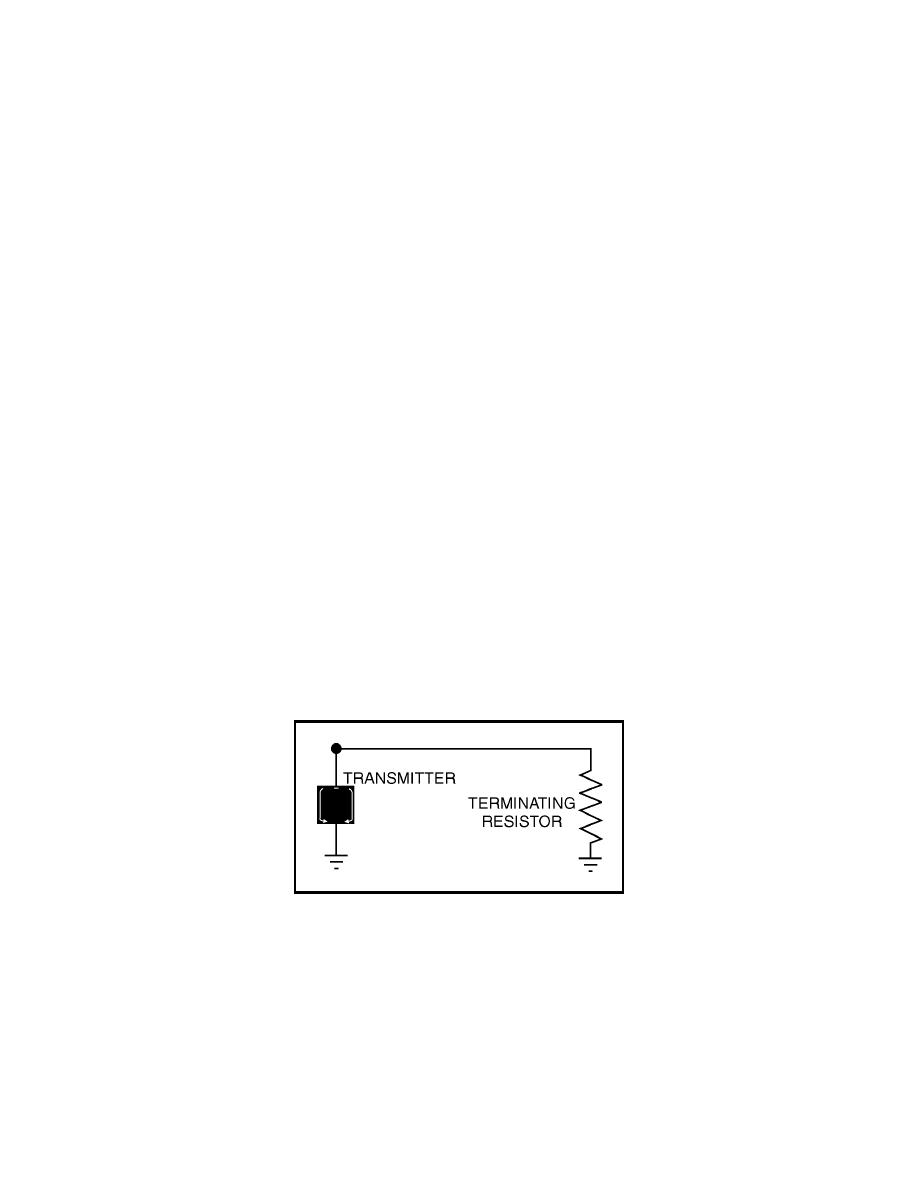
TC 9-64 _________________________________________________________________________
case of an ordinary transmission line, eliminates standing waves. The
current, therefore, decreases uniformly along the wire as the terminated end
is approached. This decrease is caused by the loss of energy through
radiation. The energy remaining at the end of the antenna is dissipated in
the terminating resistor. For such an antenna to be a good radiator, its
length must be fairly long. Also, the wire must not be too close to the ground.
The return path through the ground will cause cancellation of the radiation.
If the wire is sufficiently long, it will be practically nonresonant over a wide
range of operating frequencies.
Long-Wire Antenna
4-160. A long-wire antenna is an antenna that is one wavelength or longer
at the operating frequency. In general, the gain achieved with long-wire
antennas is not as great as the gain obtained from the multi-element arrays
studied in the previous section. But the long-wire antenna has advantages of
its own. The construction of long-wire antennas is simple, both electrically
and mechanically, with no particularly critical dimensions or adjustments.
The long-wire antenna will work well and give satisfactory gain and
directivity over a frequency range up to twice the value for which it was cut.
In addition, it will accept power and radiate it efficiently on any frequency for
which its overall length is not less than approximately one-half wavelength.
Another factor is that long-wire antennas have directional patterns that are
sharp in both the horizontal and vertical planes. Also, they tend to
concentrate the radiation at the low vertical angles.
4-161. Another type of long-wire antenna is the beverage antenna, also
called a wave antenna. It is a horizontal, long-wire antenna designed
especially for the reception and transmission of low frequency, vertically
polarized ground waves. It consists of a single wire, two or more wavelengths
long, supported 3 to 6 meters above the ground, and terminated in its
characteristic impedance, as shown in figure 4-35.
Figure 4-35. Beverage Antenna
V Antenna
4-162. A V antenna is a bidirectional antenna used widely in military and
commercial communications. It consists of two conductors arranged to form a
V. Each conductor is fed with currents of opposite polarity.
4-163. The V is formed at such an angle that the main lobes reinforce along
the line bisecting the V and make a very effective directional antenna (see
4-48



 Previous Page
Previous Page
